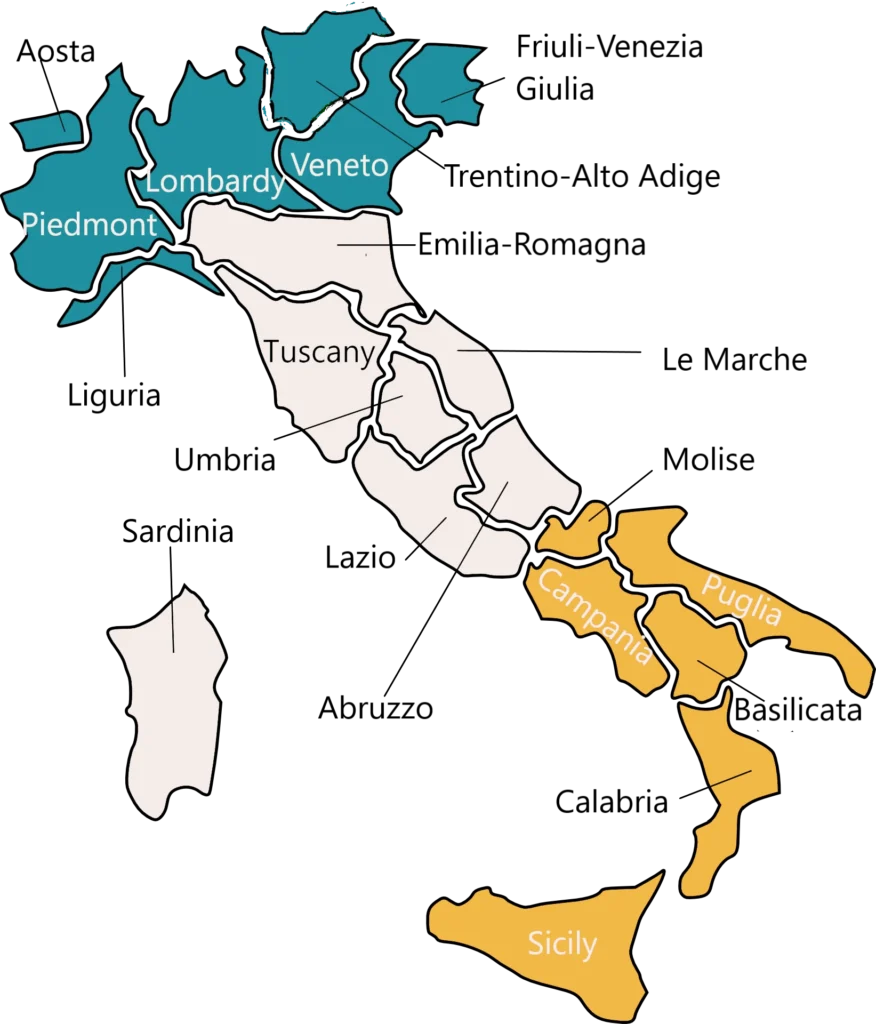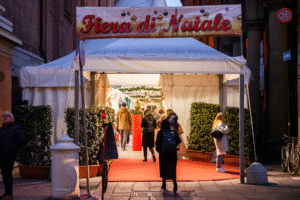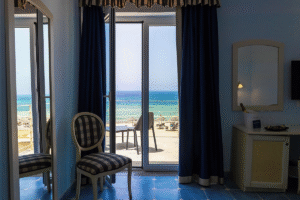Italy has a special way of drawing you in. It’s much like a charming guy pulling you close during a slow dance. He whispers sweet or flirtatious words in your ear. It makes you feel giddy, alive, and young. At least that’s how Italy has made me feel!
My husband and I started visiting Italy eight years ago, and we have now been there 16 times. It truly is my soul place. I have decided to buy a house in Salemi, Sicily, and I am currently in the process of doing so. I am also applying for the digital nomad visa.
Italy is often romanticized for its lifestyle. People especially adore the concept of “Dolce Far Niente.” This translates to the sweetness of doing nothing. However, it’s essential to acknowledge the reality of paperwork. Bureaucracy exists because the country can be slow to change in many aspects. To afford living there, you will likely need a remote job or to be retired.
That said, Italy is generally more affordable and offers a happier lifestyle, making it an attractive option. Let’s dive into this Ultimate Guide to Moving to Italy in 2025/2026.
Table of Contents
This post contains affiliate links.
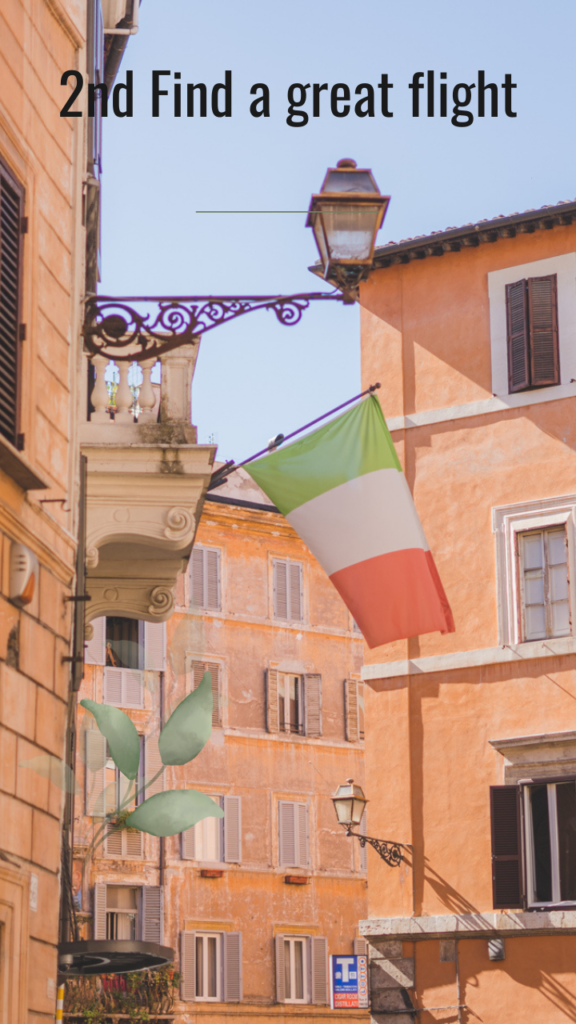
Why Move to Italy in 2025/2026?
This is an exciting time to move to Italy for three main reasons. First, the political situation in the U.S. is becoming increasingly complicated, making it a good time to seek a fresh start elsewhere. Second, Italy is now offering a Digital Nomad Visa, along with other visa options.
| Visa Type | Purpose | Duration & Renewal | Permanent Residency Path |
| Standard Work | Full-time employment with an Italian employer | Up to 2 years, renewable | Yes |
| Seasonal Work | Short-term/tourism/agriculture work | Up to 9 months | No |
| EU Blue Card | Highly skilled professionals | 2+ years, renewable | Yes |
| Startup Visa | Innovative entrepreneurs | 1–2 years, renewable | Yes |
| Self-Employment Visa | Freelancing, consulting, independent work | Varies | Yes |
| Research Visa | Academic or research positions | Project-based duration | Usually |
| Extra-Quota Permits | Specialized professions or caregivers | Varies | Depends |
| Working Holiday | Youth work-and-travel | 1–2 years | No |
Lastly, let’s talk about lifestyle and affordability. My husband and I calculated the monthly cost of renting in Italy. I was shocked to realize it would be around €1400. This includes rent, utilities, groceries, and dining out. This amount also allows for a slower pace of living, which my soul truly craves and needs.
If you’re considering buying a house, like I am, you can often find homes in the U.S. for the price of a car, especially if you’re open to renovating. Owning a house without a mortgage is truly appealing, especially in a country that values relaxation. Home prices are increasing in cities like Salemi due to rising demand from people moving to Italy.
One benefit of moving to Italy is the growing expat communities in various regions. They can help alleviate feelings of loneliness. Connecting with others who have navigated a similar relocation process can be incredibly supportive. They can assist with any questions you may have, especially when it comes to dealing with the notorious Italian bureaucracy.

Can You Legally Move to Italy? Understanding Visas & Residency
I am purchasing a home in Italy. However, the transaction does not automatically grant me residency. This is a common misconception. Most homes are bought with cash, and if you are from a reciprocal country, you can legally purchase a property.
If your country lacks reciprocity, you can’t register the deed in your name. Sometimes, individuals circumvent this restriction by using companies or EU partnerships. However, this approach is complicated. It is not advisable without legal assistance.
However, you still need to follow the Schengen 90-day rule, depending on your country of origin.
Visa Options for Moving to Italy
You need to determine the legal options for extending your stay past the 90-day tourist limit. Do this before you pack your espresso machine. Here are the main visa paths most non-EU citizens use:
Elective Residency Visa (retirees)
Consider this the “Dolce Vita Visa.” It’s intended for individuals who can afford to live in Italy without working. These individuals are typically retirees or those with passive income. To qualify, you must show that you have a steady income. This includes income from pensions, investments, or rental earnings. You also need to provide proof of health insurance. The only downside is that you cannot work in Italy on this visa, even remotely for a foreign company. It’s solely meant for those who wish to live off their savings or retirement funds.
Digital Nomad Visa (remote workers)
Italy finally joined the remote-work wave in 2024, launching its Digital Nomad Visa. Unlike the elective residency option, this one does allow you to work remotely for a non-Italian employer.
Requirements are still evolving, but expect to show proof of remote employment, minimum income, and private health coverage. It’s the go-to for freelancers, tech workers, or anyone whose office is a laptop. After 2 years of this Visa you can apply for residency but we will see rules will change.
I am currently working on this project, and I will write a guide detailing my entire experience with it. For now, you can follow me on TikTok.
Student Visa (long-term study)
Whether you want to study art in Florence or dive into an Italian language program, you need a student visa. The student visa is your ticket. It covers the length of your studies, usually one year at a time. It is renewable. Enrollment in a recognized Italian institution is required.
Bonus: student visas often allow limited part-time work, though wages tend to be low.
Work Visa (highly limited quotas)
This is the tough one. Italy sets annual quotas for non-EU work permits under a system called the decreto flussi. Quotas are small, competition is fierce, and usually only certain industries (like agriculture or caregiving) make the list. You need a very specific job offer from an Italian employer. They must be willing to sponsor you. Therefore, this isn’t the easiest route.
👉 Each of these visas can eventually lead to residency, and with time, even citizenship. But the first step is picking the right door into the country.

How Much Does It Cost to Live in Italy?
It’s important to factor in your budget when deciding where in Italy to call home. The north–south divide is real. Northern cities like Milan, Florence, and Bologna are noticeably pricier. They are more expensive than southern spots such as Naples, Calabria, or Sicily.
And don’t forget the “big city tax.” Rents in Rome and Milan are often double what you’d pay in a small town. That’s why so many retirees and digital nomads are drifting toward smaller cities and villages. Towns like Salemi and Mussomeli in Sicily have made headlines. They are offering homes at symbolic prices to attract new residents.
When Max and I ran the numbers for Calabria, our monthly budget came out to roughly €1,400 (about $1,500 USD). Rent in that area averaged €400–€600, which gave us a baseline for housing costs. From there, we added in everyday expenses:
- Groceries: about €250–€300 for two people
- Utilities & internet: around €150–€200, depending on the season
- Dining out: €10–15 for a pizza and drink at a local trattoria; €50+ for a two-course dinner for two at a mid-range restaurant
- Transportation: €40–€60 for a monthly train pass, or €80–120 in gas if you own a car
Compared to the U.S., the difference is striking. A night out doesn’t break the bank, fresh produce is cheaper (and tastier), and healthcare is significantly more affordable. Of course, costs vary by region. However, if you’re willing to look south of Rome, you’ll usually stretch your budget much further.
| Category | Northern City (e.g., Milan/Florence) | Southern City (e.g., Naples) | Small Town Sicily/Calabria |
| Rent (1–2 bed apt.) | €1,000–1,500 | €600–900 | €400–600 |
| Utilities + Internet | €200–250 | €150–200 | €120–180 |
| Groceries (2 people) | €350–450 | €250–300 | €200–280 |
| Dining Out | €250–300 | €150–200 | €100–150 |
| Public Transport/Train | €60–80 (monthly pass) | €40–60 | €30–50 |
| Healthcare/Insurance | €120–200 (private) | €100–150 | €80–120 |
| Leisure/Entertainment | €200–300 | €120–180 | €80–150 |
| Miscellaneous | €150–200 | €100–150 | €80–120 |
| Estimated Total | €2,300–3,300 | €1,400–2,000 | €1,100–1,500 |
Notes for Readers
- These ranges are averages for two people living modestly but comfortably.
- Healthcare costs drop once you enroll in the Italian system (Servizio Sanitario Nazionale) after obtaining residency. Until then, you’ll need private coverage. I am using Yonder Insurance, which has a great price for our international plan.
- Dining out is very affordable compared to the U.S., but costs can creep up in tourist-heavy cities.
- Transportation is mostly public unless you’re a resident who can own/insure a car. Occasional rentals or car-sharing apps can fill the gaps.
🔎 Hidden Costs to Watch For in Italy
Even with a well-planned budget, Italy has some surprise expenses that can catch newcomers off guard:
- Heating Costs (Gas Bills in Winter): Many apartments are heated with natural gas. In colder regions, winter bills can spike to €200–€300 a month.
- Condo/Building Fees (spese condominiali): If you rent or buy an apartment, you’ll likely pay a monthly fee that covers building maintenance, cleaning, and sometimes heat/water. Expect anywhere from €30 to €200.
- Condo/Building Fees (spese condominiali): If you rent or buy an apartment, you’ll likely pay a monthly fee that covers building maintenance, cleaning, and sometimes heat/water. Expect anywhere from €30 to €200.
- TV & Radio Tax (Canone RAI): A small annual fee (~€90) for owning a TV, often bundled into your electricity bill.
- Appliances & Furniture: Many Italian rentals come unfurnished — and we’re not just talking about couches. Sometimes apartments are missing basics like light fixtures or kitchen appliances.
- Stamp Duties & Paperwork Fees: Opening a bank account, registering a lease, or applying for a visa often comes with minor but recurring “marca da bollo” (tax stamps, usually €16–32 each).
- Tourist Season Markups: In touristy areas, expect higher prices on dining, utilities, and even short-term rentals during summer and holidays.
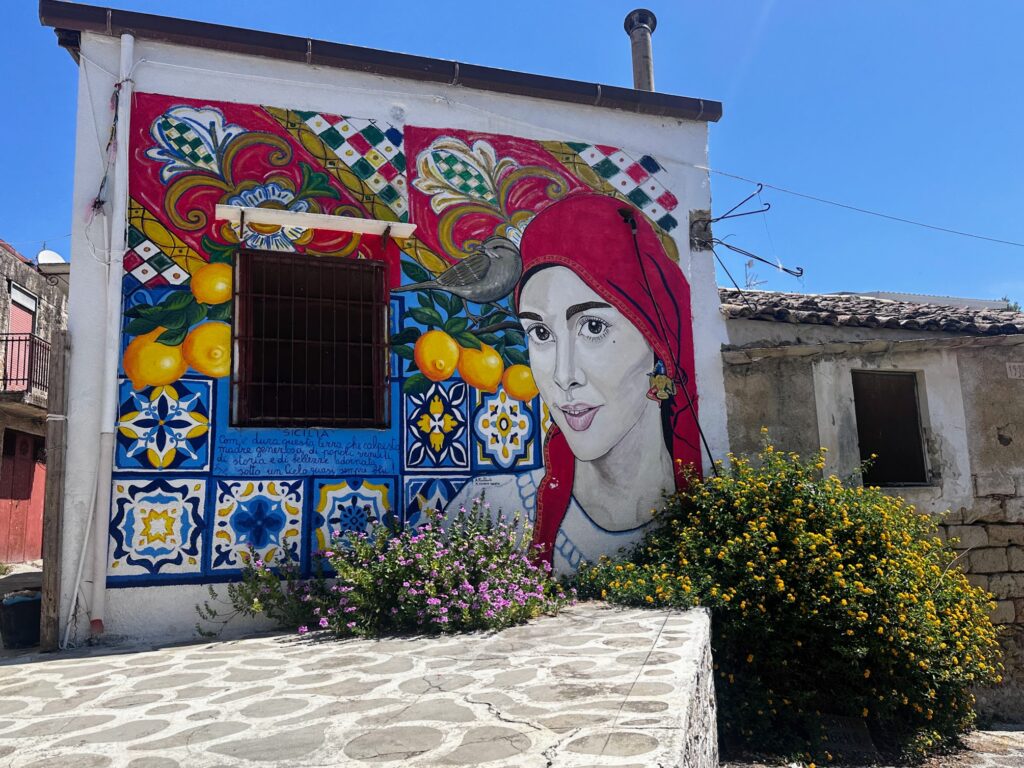
Best Places to Live in Italy as an Expat
This is such an important question! In my opinion, there are two main factors to consider when narrowing down the region you’d like to move to. The first factor is your budget, which applies whether you are buying or renting.
The second factor is the weather. I am originally from Brazil and currently live in Florida, so I knew we didn’t want to buy property in the North. I don’t like winter or snow, so initially, I was looking at Calabria, but I eventually fell in love with Sicily.
Next I call this the list of nonnegotiables. For us, it was the following:
- Warmer weather
- Affordable
- Less than an hour from the airport
- Less than 40 minutes form the beach
- At least 8,000 inhabitants
- Close to major highway
- Has to have restaurants
- Has to have a hospital
The areas trending on TikTok for expats include Sicily, Abruzzo, and Le Marche. Le Marche is an underrated gem. Puglia is also popular, as there are some affordable finds in lesser known towns. Umbria is another trending area. While there are many more regions to explore, these are some of the top choices I often see.
A helpful tip is to join some Facebook groups to familiarize yourself with the local scene. This way, you can gauge how active the expat community is and find answers to many of your questions. For example, I joined the Expats in Sicily group. I also joined the Expats in Calabria group. This was while I was still undecided about which region to choose. Once I decided on Sicily, I then joined the local Salemi Facebook group.
I personally don’t recommend the larger cities like Rome and Florence, as they tend to be very crowded and overwhelming. However, if you’re considering living close to one of these major cities, watch some TikToks about them. Join expat groups related to that city.

Step-by-Step: How to Move to Italy from the U.S. (or Abroad)
Moving to Italy isn’t just about booking a one-way ticket. It’s also not only about brushing up on your Italian hand gestures (though both help). There’s a process — and the better you prep, the smoother your landing.
Before the Move to Italy
Moving Your Belongings to Italy: What Most People Do
Most expats quickly learn that moving your entire U.S. household across the Atlantic is both expensive and unnecessary. Many decide to move light. They sell or donate big furniture. They only ship essentials like clothes, personal items, and maybe a few sentimental pieces.
Italy has plenty of furnished apartments. However, “furnished” sometimes means just a bed frame and stove. It often makes more sense to buy locally once you arrive.
For those who do want to bring more, international moving companies can handle the logistics. Popular names among U.S.–Italy expats include SIRVA Worldwide, Allied International, and Suddath, as well as Italy-based movers like Traslochi Internazionali.
These companies typically offer door-to-door shipping via container. However, it’s not cheap. Think $5,000–$10,000+ depending on volume. The cost also depends on the shipping method. Shipping by sea is slower and cheaper. Shipping by air is fast and very expensive. Many movers also offer a groupage service. This service allows your belongings to share container space with other people’s shipments. It makes moving more budget-friendly if you don’t have a full household load.
Some people skip freight shipping altogether. They rely on excess baggage services like Luggage Forward, Send My Bag, or DHL Express for boxes and suitcases. This method is perfect if you’re moving with just clothing. It suits your tech gear and a few home comforts. It is far cheaper and faster than a shipping container.
Another option? Storage in the U.S.. Many expats leave furniture or keepsakes in long-term storage until they’re certain about settling in Italy. Monthly rates vary. It can be a smart safety net if you’re unsure how long you’ll stay. It can also help if you’re worried about whether Italian apartments will fit your stuff (spoiler: many don’t).
👉 Bottom line: most newcomers don’t ship a full household unless they’re relocating permanently with family. If you’re testing the waters in Italy, travel light. Pick up what you need locally. This is usually the least stressful option. It is also the most budget-friendly.
Here’s the typical path most expats follow:
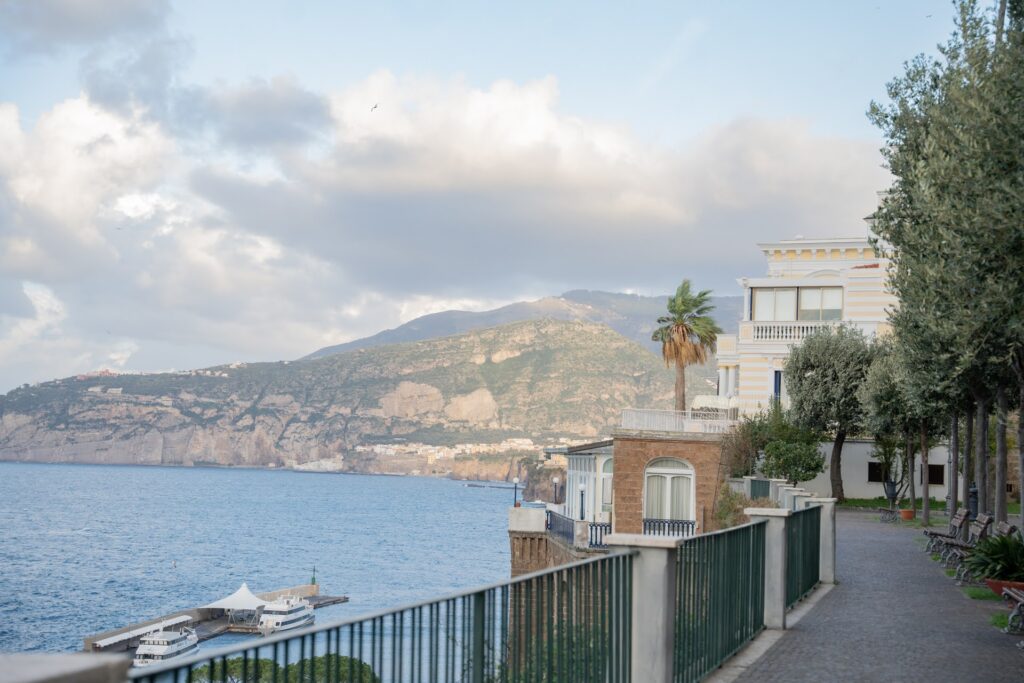
Step 1: Decide Which Visa Fits Your Life
- Retirees usually apply for the Elective Residency Visa.
- Remote workers lean on the Digital Nomad Visa.
- Students go for the Student Visa.
- Traditional employees need a Work Visa (though quotas are tight).
👉 Start here, because everything else depends on your visa choice.
Step 2: Apply Through Your Local Italian Consulate
- You can’t apply once you’re in Italy — you must apply in your home country first.
- Each consulate has slightly different requirements, but expect a mix of:
- Proof of income or employment
- Health insurance
- Background check
- Housing arrangement (rental contract, hotel booking, or a hosting letter)
- Proof of income or employment
- Consulates can book up months in advance, so schedule early.
Step 3: Gather Your Paperwork (and Lots of Copies)
- Passports valid for at least 6 months.
- Birth certificate, marriage certificate (if applicable).
- Apostilles and certified translations for official documents.
- Financial statements (bank accounts, pensions, or job contracts).
👉 Pro tip: Italians love stamps and official seals, so always bring extra certified copies.
Step 4: Secure Housing Before You Arrive
- Some visas require proof of accommodation (lease, Airbnb contract, or notarized invitation letter).
- Many newcomers start with short-term rentals, then look for longer leases once on the ground.
- If you’re buying property, remember the reciprocity clause. Foreigners can only buy if Italians can buy in your country.
Step 5: Arrive in Italy and Register Locally
Landing in Italy with your visa in hand doesn’t mean the paperwork is finished. Within the first eight days of arrival, go to your local immigration office (Questura). You also need to register with the town hall (Comune). T
This is where you apply for your permesso di soggiorno. This is the residence permit that makes your stay legal beyond the entry visa. At the same time, you’ll also request your codice fiscale — Italy’s tax identification number. Think of it as your social security and driver’s license number rolled into one. You’ll need it for almost everything. This includes signing a lease, paying bills, and getting a SIM card.
Enroll in Healthcare & Set Up Essentials
Once your residence permit is underway, it’s time to tackle the basics of living. With your documents in place, you can register for Italy’s national healthcare system (Servizio Sanitario Nazionale). This registration gives you access to doctors and hospitals at a fraction of U.S. costs. You’ll also want to set up daily essentials like utilities, internet, and a bank account.
The process can be straightforward or a lesson in patience, depending on where you live. Bureaucracy here tends to move at its own pace. Once you’ve got your electricity running, life starts to feel more settled. Get your Wi-Fi connected, and have your healthcare card in your pocket. Life starts to feel a lot more settled then.

What are the tax implications for expats living in Italy?
✨ In short:
- Retirees may qualify for the 7% regime in select southern towns.
- Remote workers and employees may access inbound worker tax breaks.
- U.S. citizens must still file in the U.S., but treaties and credits usually prevent double taxation.
When you move to Italy long-term, taxes become part of the equation. Here’s what expats need to know:
1. You Become a Tax Resident After 183 Days
If you spend more than 183 days a year in Italy, you may be considered a tax resident. Registering residency (residenza) establishes this status. That means you’ll be taxed on your worldwide income, not just what you earn in Italy.
2. Income Tax Rates (IRPEF)
Italy has a progressive income tax system, ranging roughly from 23% to 43%, plus regional and municipal surcharges. If you’re still earning abroad, it’s important to understand how your income will be taxed. This applies once you become an Italian tax resident.
3. U.S. Citizens & Double Taxation
Americans still file a U.S. tax return even if they live in Italy. The good news: the U.S.–Italy tax treaty prevents you from paying tax twice. Mechanisms like the Foreign Earned Income Exclusion (FEIE) or foreign tax credits also help. But you’ll need a tax advisor who understands both systems.
4. The Famous 7% Flat Tax Towns
Here’s where things get interesting. To attract retirees, Italy introduced a tax regime in 2019:
- If you move your residency to a qualifying town in southern Italy, you can benefit from tax advantages. These regions include places like Sicily, Calabria, Campania, Puglia, Abruzzo, Molise, Basilicata, or Sardinia. The town must have fewer than 20,000 residents. In this scenario, you have the option to pay a flat 7% tax on your foreign income. This rate applies for up to 10 years.
- This is available only to new residents receiving pension or retirement income from abroad.
5. Other Tax Incentives
- Inbound Workers Regime: Expats moving to Italy for employment or self-employment can receive 50%–70% of their income tax-free. This benefit applies for five years. In some cases, this benefit is extendable to 10 years.
- Flat Tax for High Net Worth Individuals: Italy also offers a €100,000 flat tax regime. This is available for very wealthy individuals who want to transfer tax residency.
6. Property Taxes
- Owning property in Italy incurs taxes such as IMU (municipal property tax). However, this tax does not apply if the property is your primary residence.
- If you buy a second home, expect additional taxes depending on the property value and region.

What Daily Life in Italy Is Really Like
Life in Italy is often the dream people picture. They imagine strolling to the local market for fresh bread. They see themselves sipping espresso at a café and taking evening walks through cobblestone streets. But daily reality comes with its quirks.
The first challenge for most newcomers is the language barrier. In larger cities and tourist hubs, you’ll find plenty of English speakers. However, in smaller towns, daily interactions at the post office, pharmacy, or supermarket will likely be in Italian. Learning even basic phrases makes life smoother, and it also helps you connect with locals who appreciate the effort.
Then there’s Italian bureaucracy, which is as much a cultural experience as the food and festivals. Opening a bank account, registering your residence, or setting up utilities can involve multiple visits. There are stacks of paperwork and an endless supply of stamps and signatures. Patience is not just a virtue here — it’s a survival skill.
On the brighter side, social life in Italy often blossoms naturally. Italians are known for their strong sense of community. Even as an outsider, you’ll find neighbors or café regulars quick to strike up conversation. Building friendships can take time, but shared meals and local traditions are natural icebreakers.
Be prepared for some cultural differences in daily rhythms when in Italy. Time feels more fluid here. Businesses may close for long lunch breaks. Trains don’t always run on schedule. Dinner often starts much later than in the U.S. The work culture emphasizes living to enjoy life. You may find this refreshing once you adjust. For example, in Sicily, siesta time means everything is closed from 1:30 to 4:30, and sometimes even longer.
Many businesses completely shut down for vacations during half of August. It creates a different atmosphere altogether, and unlearning the constant hustle can be quite a challenge.
Shopping also follows its own rules; don’t expect 24/7 big-box stores. Instead, you’ll find family-run shops with limited hours, which adds charm but requires planning. Also don’t expect fast Amazon deliveries like in the US.
Daily life in Italy has its frustrations. However, it’s those very differences that often become the reasons people fall in love with living here.

Pros and Cons of Moving to Italy
Every country comes with its trade-offs, and Italy is no exception. On the positive side, it’s hard to beat the quality of life here. You have access to fresh, affordable food and world-class art. Healthcare won’t empty your bank account. All these factors contribute to a lifestyle that feels richer without necessarily costing more.
For retirees and remote workers, the slower rhythm of life can be a blessing. It allows for long lunches and Sundays spent with family. There is also the everyday luxury of living in a place where history is woven into every street corner. In smaller towns and the south, costs are lower than in much of Western Europe. This makes it possible to live comfortably on a modest budget.
That said, Italy has its frustrations. The bureaucracy is famously slow. Even the simplest tasks — like setting up internet or renewing a document — can turn into a weeks-long process. Jobs for foreigners are limited, especially if you don’t speak Italian, and wages tend to be lower than in northern Europe or the U.S
Everyday things like shopping hours or transportation can feel inconvenient at first. This is especially true if you’re used to efficiency and 24/7 access. Regional differences also play a big role. The north is wealthier and more fast-paced. In contrast, the south can feel more relaxed but less organized. Sometimes it is less economically stable.
Some people on TikTok have mentioned that moving to Italy can sometimes make you feel unintelligent. Tasks that were easy in the US can become significant challenges. Others have shared that they grieve their old life and how it is a process.
In short, moving to Italy is about trade-offs. Do you value lifestyle over convenience? Are you willing to adapt to a culture where patience is essential? If so, the rewards are enormous. However, if you expect everything to work as seamlessly as it does back home, you may find yourself frustrated. It might frustrate you more often than it enchants.
At the end of the day, life in Italy is a mix of magic and messiness. Your enjoyment depends largely on your expectations. Which brings us to the real question: is moving to Italy the right choice for you?
Interestingly, I am not relocating. Instead, I am adopting a hybrid model, which can be a bit messier, but I am sharing my journey. I believe this will give you a glimpse into what living in Italy can be like now! Consider booking a trip. You might even want to book a few trips to explore different regions. This way, you can discover which one aligns with you the most.

Is Moving to Italy Right for You?
Italy is undeniably enchanting — from its exquisite food to its stunning landscapes and the vibrant rhythm of daily life. However, whether moving there is the right choice for you depends on your individual circumstances and what you seek.
For retirees with a steady pension, Italy offers a lifestyle that feels luxurious. The same goes for remote workers who can take their jobs with them. This lifestyle is also affordable. Families often appreciate the strong sense of community. The healthcare and education systems provide significant value compared to what you may be accustomed to in the U.S.
If you thrive on efficiency, quick service, and a 24/7 lifestyle, Italy may test your patience. The bureaucracy can be slow, and job opportunities are limited unless you are highly specialized and fluent in Italian. Additionally, cultural differences regarding work and daily schedules can be frustrating if you’re not prepared to adapt. This is why many people compare Italy to countries like Portugal or Spain before making the move — each offers a different balance of lifestyle, cost, and opportunities.
The bottom line? Italy is best suited for those who embrace change. These individuals value experiences over convenience. They see life as something to savor rather than rush through.
Next Steps
If you’ve made it this far, chances are you’re serious about making Italy more than just a vacation spot. The good news is, you don’t have to figure it all out at once.
Start by exploring the visa that fits your lifestyle. This could be the Elective Residency Visa. It might be the new Digital Nomad Visa or another long-stay option. From there, dive into the numbers. Check out my full breakdown of how much it really costs to live in Italy. Explore the best cities for expats, whether you’re craving the bustle of Rome or the quiet charm of Calabria.
If buying a home is part of your dream, read my guide. It explains how to buy a house in Italy as a foreigner. It also includes information on what those famous €1 homes are really like.
Also check out Driving in Italy and Is Sicily Safe.



